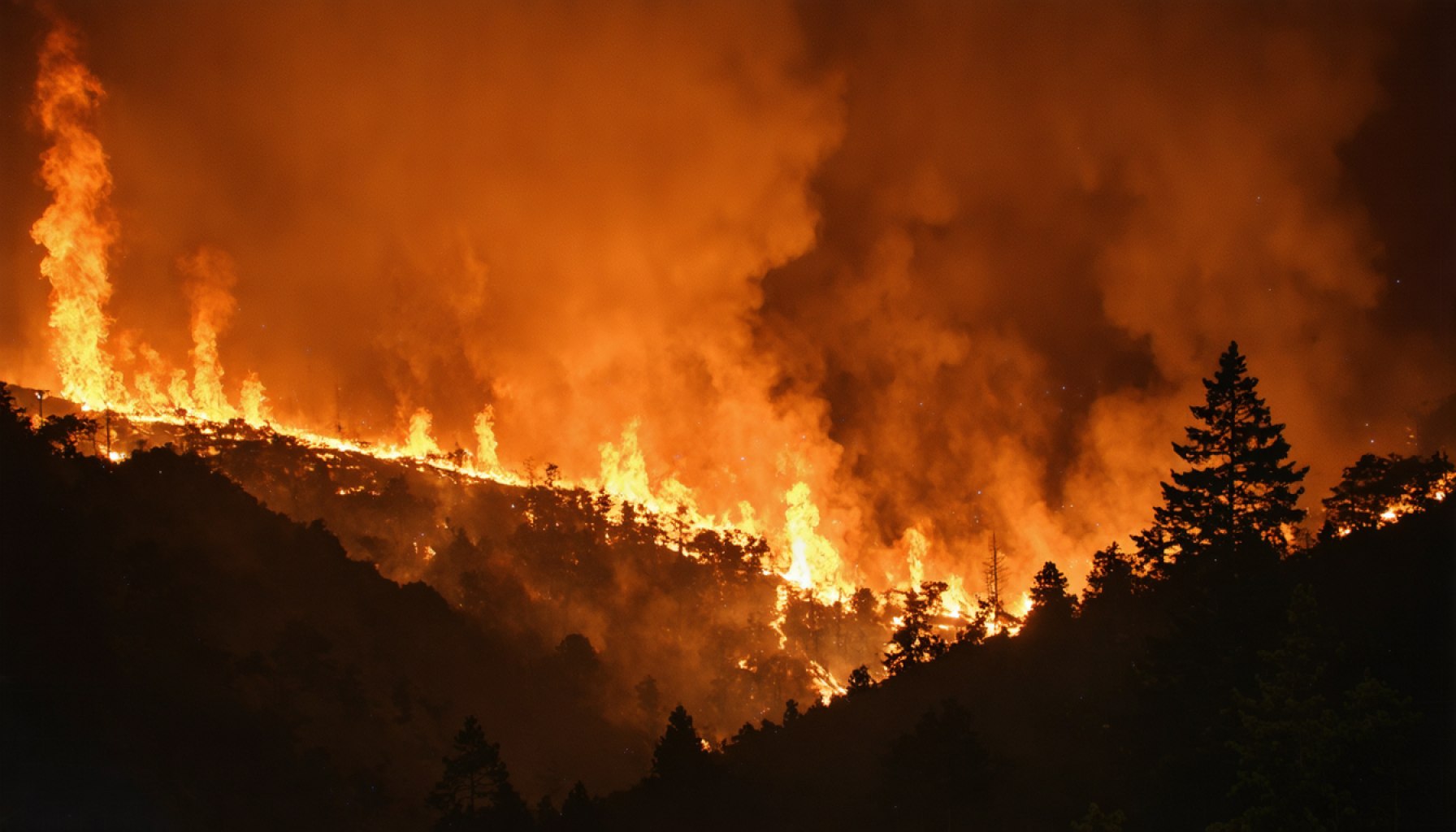- Forest fires continue to ravage the regions of Ehime and Okayama Prefectures, unyielding since 23 October.
- Aerial firefighting efforts are underway, with helicopters dispersing water to combat the blazes.
- The Self-Defence Forces play a key role, demonstrating resilience and unity against the challenges of nature.
- Local communities, including those in Imabari City and Saijo City, unite in solidarity amid the smoke and uncertainty.
- The fires highlight the fragile balance of nature and the importance of collective action in environmental challenges.
- The situation underscores the necessity of timely intervention and enduring community spirit.
- Overall, the crisis serves as a powerful reminder of the need to cherish and protect our environment.
Towering plumes of smoke teeter on the horizon as forest fires continue to rage through the lush landscapes of Ehime and Okayama Prefectures. A relentless inferno, which ignited on 23 October, has shown no signs of surrender. As dawn breaks on the morning of 25 October, heroic firefighting efforts persist against the seething blazes, hoping to reclaim the sprawling expanses of wilderness from the clutches of fire.
In an act of unity and resilience, Ehime’s disaster response teams have mobilised, launching a coordinated assault from the air. Helicopters, blades whirring like vigilant sentinels, soar into skies suffused with ash, dumping thousands of gallons of water in audacious attempts to quell the hungry flames. Among them is a fleet dispatched by the Self-Defence Forces, embodying steadfast resolve in the face of nature’s unpredictability.
The fabric of small communities, such as the embattled Imabari City and Saijo City, stretches as their residents watch anxiously, the thick haze a somber reminder of the fire’s insatiable spread. Whispers of hope intertwine with smoke, as residents band together, proving solidarity in adversity is not just an ideal but a palpable force.
Yet, amidst the chaos, nature tells its own story. These rugged terrains, typically a tapestry of green, find themselves choked under relentless advances of fire. Glades turn to char, the crackle of embers standing as a dramatic testament to the raw power of the conflagration.
In moments like these, the line between human ingenuity and natural forces blurs. It’s a dance of elements where cooperation and swift action become the keystones of survival. As helicopters swoop with their aqueous cargo, each successful water drop carries not just relief, but a reminder of humanity’s indomitable spirit.
While the fires serve as a grim reminder of our planet’s strength and vulnerability, the response elevates a singular message: collective action, timely intervention, and enduring community spirit are crucial in facing the challenges of an evolving natural world. It’s a resounding call to arms, urging us to cherish and protect the delicate balance of our environment.
Devastating Forest Fires in Japan: What You Need to Know Now
Overview
The forest fires in Ehime and Okayama Prefectures serve as a stark reminder of the growing threat of wildfires worldwide. As these flames rage on, affecting small communities like Imabari City and Saijo City, understanding the full scope of the crisis, the response efforts, and future implications becomes essential.
Firefighting Efforts and Strategies
The use of aerial fire suppression, including helicopters from Japan’s Self-Defence Forces, highlights the importance of rapid response to wildfires. These helicopters, equipped with large buckets, are making significant attempts to contain the blaze through targeted water dumps. This method is effective in hard-to-reach areas and demonstrates a vital aspect of modern firefighting.
The Human Impact
Residents of smaller communities face significant challenges as they watch their landscapes transform into charred remnants. The psychological toll of such natural disasters should not be underestimated, as people grapple with the potential loss of homes and livelihoods. Community resilience, however, shines through as residents come together to support one another during these trying times.
Environmental Consequences
The environmental impact of the fires is profound. Forest ecosystems that take decades to mature can be destroyed within hours. The loss of vegetation affects local biodiversity and contributes to increased carbon emissions, further exacerbating climate change. Restoration efforts post-fire require extensive planning and resources to ensure the affected areas can recover and thrive once more.
Pressing Questions
What caused the Ehime and Okayama Prefectures fires?
While the precise cause of these fires is under investigation, potential factors could include prolonged dry spells or human activity. Wildfires can often stem from natural causes, such as lightning strikes, but human negligence, such as unattended campfires, is a frequent culprit as well.
What is the long-term forecast for this region regarding wildfires?
Experts anticipate that climate change will increase the frequency and intensity of wildfires globally, including in Japan. It’s crucial for regions prone to wildfires to invest in early warning systems and preventive measures to mitigate future incidents.
Quick Tips for Residents in Fire-Prone Areas
1. Create Defensible Space: Maintain a buffer zone around your property by removing dead vegetation and other combustible materials.
2. Emergency Kit: Keep an emergency kit with essential supplies, including food, water, medications, and important documents, ready to grab in case of an evacuation.
3. Stay Informed: Monitor local news and emergency alerts for updates about fire conditions and evacuation orders.
4. Fire-Resistant Building Materials: Utilise fire-resistant materials for roofing and exterior siding to better protect your home from potential fires.
Conclusion
The fires in Ehime and Okayama are a sobering reminder of our planet’s delicate balance with natural elements. Collective action, community resilience, and strategic interventions are paramount in managing such crises. As we advance, prioritising environmental preservation and sustainable practices will be essential in tackling the challenges of an evolving natural world.
For more on environmental trends and disaster preparedness, visit Government of Japan and United Nations.
